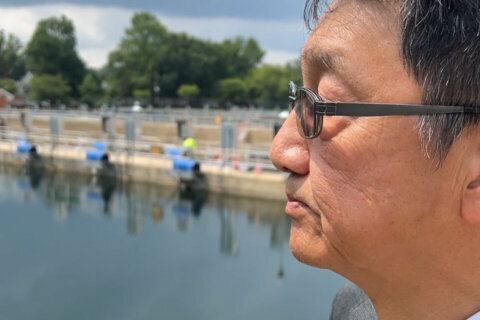Lung cancer is the leading cause of cancer deaths in the U.S., in part because it’s frequently diagnosed in later stages after it’s already spread.
Yet an infinitesimal number of people who are eligible for screening — which could help detect cancer earlier when it’s easier to treat — ever get it done.
A recently announced University of Maryland partnership aims to enhance cancer screening and early detection, leading to earlier diagnoses and more treatment options.
In widely accepted guidelines, the U.S. Preventive Services Task Force recommends annual lung cancer screening with a low-dose CT scan for individuals ages 50 to 80, who have smoked a pack a day for 20 years and currently smoke or have quit smoking within the past 15 years.
“Less than 5% of Marylanders who are otherwise eligible for lung cancer screening, using the low-dose CT approach, currently are availing themselves of that,” said Dr. Taofeek Owonikoko, executive director of the University of Maryland Marlene and Stewart Greenebaum Comprehensive Cancer Center. Owonikoko is a thoracic oncologist, who specializes in treating lung cancer.
He said the low screening rates for lung cancer are in stark contrast with the estimated 83% of women in Maryland, ages 50 to 74, who receive annual mammograms.
“There is no stigma associated with the diagnosis of breast cancer,” said Owonikoko. However, even former smokers might be reluctant to get screened because of their previous smoking.
Read more about Neal Augenstein’s cancer experience
- WTOP’s Neal Augenstein: My 2024 resolution, living with stage 4 lung cancer
- WTOP’s Neal Augenstein: Liquid biopsy can provide clues to future lung cancer treatment, prognosis
- WTOP’s Neal Augenstein: My first year with stage 4 lung cancer
Yet, stigma is only one reason people who are eligible to receive a CT scan don’t screened, he said.
“They don’t know what steps to take to get screened,” said Owonikoko. “People may not even know that they are at risk.”
On Tuesday, the Greenebaum center launched a statewide effort to increase annual screenings, with up to $8 million in funding from AstraZeneca, a biopharmaceutical company.
The goal is to provide greater access to screening, especially in underserved communities. Black patients with lung cancer are 15% less likely to be diagnosed early and are 16% less likely to survive five years after diagnoses compared to white patients, according to the latest data from the American Lung Association.
Other new services envisioned under the plan include a dedicated outpatient clinic to provide personalized follow-up care to people with suspicious CT scans.
And, outfitting a mobile CT screening vehicle, “to go to our various communities across the state, and make this an easy opportunity for patients and people,” Owonikoko said.
Get breaking news and daily headlines delivered to your email inbox by signing up here.
© 2024 WTOP. All Rights Reserved. This website is not intended for users located within the European Economic Area.








